Search the Community
Showing results for tags 'Lighting'.
-
Hello folks, I am currently trying to source hmi plugs for my strand 2500 watt and 1200 watt magnetic ballast lights. (2500w)I have bought a ballast and head both strand but the plugs don't screw together they are slightly different. I wanted to swop the plug on the ballast and the header cable to get them working together. And my 1200 watt the plug just broke on the header cable. I am finding it hard to source new ones, and struggling with how to take apart the plugs on the header cables them selfves? And ideas, I am a competent electrician but never had to swop these out before and it's baffling me. I intend fully megar testing each core once I replace them.
-
Hi everyone. I hope you all are safe and sound. I have an interview set up to take place in a stadium football field. All the lights surrounding the stadium have to be on as they all are turned off and on by a single switch unfortunately . Now I am stuck in 2 minds. I haven't had a chance to light meter the location yet but I the plan to underexpose this by 2-3 stops; then bring in my key on the talent which will then be exposed (something big obviously like a M40 going through diff to compete with those lights). I'm also thinking of covering the talent from each side and front with a 20X20 Blackout to model the light more; potentially 2x M18s on megabooms for backlight. The debate I am having is will the Blackout be needed for both sides or just do 2x favouring one side? Also if I should add the M18's as the backlight or will the stadium lights be sufficient? The whole point for me is to make it as less flat as possible. Please see the idea of my floorplan and some references for the lighting. Once again any advice is appreciated or tips from people who have been in the same filming environment. Cheers!
-
??How do you Light in Layers? (Background/Midground/Foreground) ?? What all to be careful about lighting up in layers ?? Is there any rule that can help?
-
Hello Folks, I am considering investing in some arri skypanels or some cream source vertex 8s I wondered had anyone had any experience with the creamsource vertex 8s, on research they do seem to be a good alternative to a sky panel s60 and a built in ballast and a high IP rating makes them even more attractive. Also they seem to be a hard source to begin with which would be useful as it will give me both hard and soft light options. However they are not available to hire here in Ireland and I have no hands on experience with that brand. So I was looking for people who have experience with them and any feedback on them.
-
Hope everyone is staying safe. Kindly let me know if this has been discussed before or not suitable for this section. I was going through a blog by one DOP and he had to shoot inside a church . There were two possibilities, one to throw lights from outside or to place them inside and match direction, intensity etc. However, due to budget constraints he couldn’t rig the lights inside and placed them outside. Now in the parallel dolly shot (with windows) every light was visible but as the windows were closed it didn’t look completely unnatural. Coincidentally the director liked that shot and didn’t even care about this. Now my question is how can one avoid this situation when the window will be in frame (let’s say the camera is in eye level) and the light would have to be placed outside that window. Along with avoiding blown out and diffused window frames. Thanks in advance.
-
Hey All, This may be a random and or simple question. But recently when talking to a few DPs they have mentioned using large Matth Bounce for a night exterior scenes etc. I tried to google this to research and see what this Matth is all about but not much comes up. I did have poly bounce come up. I have used Black and white Grifflon before but never Matth or Poly Bounce. Any buddy know the technical differences between the 3? How reflective is one compared to the other etc. Thanks! I really wanna know what these tools can offer.
-
So I am trying to achieve and a subtle teal and orange look similar to the image below and I want to do it in-camera as much as I can (obviously it will be enhanced in resolve but I just want to make it as easy for the colourist as possible). Here is my thought process I could shoot at 3200k in-camera and gel windows with CTB, then create some ambient blue fill light in the room by bouncing a CTB gelled light at ceiling, then key my talent with a 3200k source (same kelvin as camera) to create natural looking skin tones. (i would then CTO my tungsten practicals to make them even warmer in camera) For my scene though, the actors move around the room a fair bit, how would one go about keeping skin tones looking natural and making sure there is skin separation from the walls in camera? would I just Hollywood a source that was balanced to what the camera was to key-light my talent? Although, I do want the it be as naturalistic as I can any suggestions or thoughts? I know there are a lot of different ways of tackling this, I am more interested to hear different ways of how people would light this and how to keep skin separation when actors move around room a lot in scene? Thanks! (sourced from reddit, the work is not mine, here is the link to that post; https://www.reddit.com/r/cinematography/comments/kgymng/shot_my_first_spec_ad_let_me_know_what_you_think/?utm_source=share&utm_medium=web2x&context=3 )
-
Hi, I have been trying to read up on this but it seems I can't find anything. So forgive me if this has been answered before. How do you actually do the “mirror gag” much like I attached here. I know skyfall was big budget, so if the answer is just masking and blue screen I get it, but I do know there are quite a few that has done this practical. C
-
Hey everyone! I'm looking to light an exterior night scene in the woods, and really want that unrealistic powerful back moonlight look. All of my actors will be keyed by their own lanterns, but I just want to have that moonlight in addition. I came across this scene from Stranger Things season one, shot by Tim Ives, that really resembles the look I'm going for. My question is, does anyone know how this scene was actually lit? I can't tell if it's a single soft source or several sources, and how the characters are not backlit but the fog behind them is. Also, if anyone knows how they would have achieved this color, that almost bluish green look, what kind of gels over what kind of lights. I would greatly appreciate any input on this! Thanks guys!
-
Dear All, I have been wondering and testing how light stacks and its correlation to light fall off. The term 'stack' is most likely wrong, what I mean by it is when two beams of light overlap does the luminance value say foot candles in this instance add up? It makes sense as for example a maxi brute or other Fays that have several lower wattage lamps such as 1k's or 650's add up to produce a larger output. So for instance if I had several Par64 cans and rigged them in an array in which the distance between fixtures was minimal the total output would be the addition of all the outputs of the par cans combined? However I question this further (reference diagram bellow) in which then if you bounced several sources into the same area of say a frame of ultrabounce. If the beams overlapped would they add together create a more powerful source with therefore less fall off. Putting terms into words is not my strong suit so I have drawn a crude diagram bellow. The tests I have created had mixed results and while practical is good and something I shall test further for a future rig the theory behind it interests me greatly! Please do note nothing on this diagram is accurate from the refraction etc to anything. Just a crude idea.
-
Hello all! I'm a new member to this forum, I'm an undergrad student in LA and I recently wrapped shooting a new film just last week. One of the scenes I shot took place at an arcade, I was hoping to get feedback from other like-minded artists. What did you like? What are some things you would 've done differently in regards to lighting? If you have questions let me know! I'll be posting more stills in the coming weeks. Thanks. Link to stills https://imgur.com/a/hGzTWI2
-
What are some of the most common lighting setups a gaffer , new into the job , must be aware of ? Could you share photographs along with each ? For Eg : Lighting up a green screen studio , Day to night & Night to day setups , Interiors with & without windows , Lighting up the same inside a studio , Lighting for different times of the day
-
Hi everyone, as I'm involved in low budget filmmaking, I'm interested in knowing what I can do lighting wise, when shooting in houses and just using the regular wall plugs, without the gaffer having to do any setup for bigger lights. It's a topic where I feel quite rusty. In the US, I believe your theoretical limit is 120v*15a = 1800W per circuit. In France, we can in theory go up to 230*16 = 3680W. 1/ At the rental place, is this effectively the thresholds that divide lights that come with regular plugs and lights that don't (32A only) ? 2/ Does that mean that some lights (for example a 2.5k) come with a regular plug here but not in the US ? 3/ What are the brightest lights that you know of that can be plugged into regular home wall sockets ? For some reason I have - for France - the 2.5kW HMI, but I don't know all the lights, and I especially don't know how far LEDs have come in the last five years. Given their efficiency, I suppose a 2K (actual, not "equivalent") LED Fresnel would have an amazing output, if that even exists/could exist. 4/ Do you have a set safety "wiggle room" in mind, for example you would remove 20% of these theoretical max output and end up with 1500W in the US and 3000W in France ? Sorry these questions are a bit all over.. Thanks a lot for reading.
-
I was recently asked to help shoot a few reenactment boxing sequences for a documentary and was wondering if I could pick some of your brains. After studying a few film scenes and actual boxing and MMA events, I think that a fairly strong (but soft?) top light and some harder sources that can dance around the subjects as a back light would be the simplest approach. Since I think this will be done on a 'modest' budget, I thought maybe some 4ft quasars through a magic cloth or silk for the top light, and like source 4s or pars for the back lights. I feel like I might be missing something, but I also do like to keep things simple. Does anyone have any insight on how to light a scene like this, or perhaps any recommendations as far units or approach? Or even references that I could research? So far, I've referenced Ali, Raging Bull and some of the reenactment footage from the Dark Side of the Ring docu-series. Any kind if advice would be greatly appreciated, RC
-
Hey Everyone I must just be doing something wrong or my lightmeter is wrong but I was testing my 800w open face lights today between a few brands I have and noticed that my own Arrilite 800w Open faces put out considerably less light than what Arri's photometrics says they should? Arrilite 800w at 3ft away pointing directly at the lightmeter dome Recessed inside not out, settings (25fps, 800iso, 180d) 240v Full Flood I got a 340fc , Arri's photometrics say it should be roughly 537fc Full Spot I got a 2200fc, Arri's photometrics say it should be roughly 9871fc Is there something I'm doing wrong? I checked the bulb, Cleaned the dome results are the same I understand photometric arnt 1:1 but mine seem so far off Thanks -Samuel
- 8 replies
-
- photometrics
- lighting
-
(and 1 more)
Tagged with:
-
Hey there everyone! I am a colombian film student and wannabe cinematographer and I am looking for some advise for an upcoming short film me and some classmates are preparing. So I am going to be the DP for this short and in terms of lightning I am looking to have an aesthetic close to the images I attached below for the interior daylight scenes. Logic tells me that to achieve this I should have some strong key lights motivated from the windows on the characters and expose to those bright areas of the face, so everything else will be darker to achieve that high contrast ratio. We´ll probably have like 2 or 3 arri 1000 and maybe like 6 arri 650, it really depends on what the faculty will have available at the time and the budget that production will give us (which will be very, very low). So really I want to have a realistic view of our lightning capabilities with such few lights, can I achieve this look with the lights that are available? If so, what tips can you guys give me to achieve it on an extremely low budget? One of our likely sets is a house with really big windows, so one of the strategies I came up with is partially blocking some windows to control and limit the entrance of light (because it may be too much and spreading everywhere). Am I thinking about this the right way or am I completely off? Thanks in advance!
-
Hi Guys, Been going through my lenses and looking to rationalise a bit, so I’m selling the following kit: Lenses - All in PL Mount: - Zeiss T1.3 MK2 s16mm Super Speed Lens Set (9.5mm, 12mm, 16mm) - £6’000 gbp obo - Excellent Condition! Optics are Excellent, Mechanics Excellent - Zeiss 135mm T2 Std Speed Prime Lens - £2500 gbp obo - Excellent Condition! Optics are Excellent, Mechanics Excellent - Zeiss LWZ.2 15.5 - 45mm - £6’800 gbp obo - Excellent Condition. Just had a full service by my tech at Arri. Optics are Excellent, Mechanics Excellent - Angenieux T3.9 Zoom 25-250mm - £1’000 gbp obo - Glass is good aside from a ding and some scratches on the front. Will need a shim as doesn't hit infinity currently. - Duclos 11-16mm Zoom - £1100 gbp obo - Excellent Condition Throughout! Optics are Excellent, Mechanics Excellent - Lomo Std Speed Set 7 Lens Set - 18, 22, 28, 35, 50, 75, 135mm - £4’000 gbp obo - Glass generally in very good condition although there is an internal crack in the 18mm (a common issue with these lenses) and some heavy coating marks on the front of the 135mm. Will need a service as some of the iris’ have oil on them. All detailed in the pictures - Cooke 317mm Telepanchro (Not in PL) - £3’500 gbp obo - Optics are Excellent, Mechanics Excellent - Cooke 25-250mm T4 - £4000gbp obo - Optics are Excellent, Mechanics Excellent Prices are + VAT if within the UK Pictures of all Lenses and other Kit Here: https://www.dropbox.com/sh/8o2rodii2u8csz3/AADWh49TXWrj655NyXG93Ilma?dl=0 Lighting: - K5600 Joker-Bug 200 HMI Lighting Kit (Near New Condition) - £1700 gbp obo Accessories Etc: - Having a Massive 'Yard Sale' of old kit also. Feel Free to email / message me direct if there’s anything you’re interested in! Very open to offers and bulk deals on all. https://www.ebay.co.uk/sch/cinelens2020/m.html?item=124257386665&rt=nc&_trksid=p2047675.l2562 Contact me on dp@adametherington.co.uk if interested
-
Hi guys, Just had this clip pop up in my feed, and I was struck by the key lights in the first section around the card table: https://www.youtube.com/watch?v=Oz8TYyn-k40 Straight-up hard keys. And they look great, almost seamless. I had to actually pause the clip at first to confirm that it was actually hard lighting. I feel like you could use this lighting in any contemporary film and "get away with it" without spoiling the look or feeling incongruous with the soft-lit keys that (these days) shape the vast majority of shots. Indeed, most of Goldeneye is very much soft-lit. Now I know this is Phil "F**king" Méheux's work, and I'm not worthy to smell the ground he cinematographically walks on. But I'd love to hear how people would approach a situation like this. I feel like it's reasonably obvious that the hard lights were simply the only practical way to pick out Bond and Onatopp from the crowd is such a large, and crowded environment (they look about a stop hotter than everyone else, which serves that purpose really nicely. Also, with such a large table, and a lot of top-light providing the general ambience, booming in softer keys for the close-ups would have been obviously time-consuming and a bit problematic. But why do these keys look so smooth and seamless (when others so rarely do)? Is it just a really precise key-to-fill ratio? I'd love to hear people's thoughts. I feel like mastering this kind of hard-lighting would make a lot of nightmare lighting situations (like this one) a great deal easier. Trying to wrangle big soft sources all the time can be a real pain.
- 26 replies
-
- lighting
- hard light
-
(and 1 more)
Tagged with:
-
As always thank to anyone in advance who reads this and your generosity with sharing your opinions and experience. I am in the process of prepping for a particular shoot, one of which that I do not have any experience in the type of shooting, although I'm eager to learn. Basically, the job requires me to 1 shot of a small rodent being shipped in from abroad on a closed set in a studio. We are to film it inside a box with 30cm width and 100cm length; interior walls fully blacked out, and the box is filled with sand and a few elements of grass. In this box it will be able to move around freely and jump (the rodent can jump 12cm on each leap). I need to have a hole in the box for the lens. They need this to be captured in as high a frame rate as possible, however we are still concerned with subjecting the rodent to too much light which could potentially harm it. After speaking with the animal handler, he has told me the light the rodents are used to would be just a bit brighter than sunset, which is not great. This means 240 FPS is more than likely not an option but I would prefer not to go below 120 FPS (96 FPS is the minimum for sure). The shutter speed will have to be higher than the average for this also as the rodent I suspect moves and jumps quite fast. To add to this I will need a high F stop to capture the rodent in sharp focus to limit any soft shots (I am trying to get a focus puller on this job if budget will allow). So putting all these factors together it does seem I'm going to need to light this quite brightly , and if the animal care provider does not agree on the lux levels of the light I will have to sacrifice the F-Stop sharpness a but along with reducing the high frame rate. Now a few questions for anyone who may have some experience with filming animals in a studio in tight areas or in small mammal camera boxes: What lens/lenses would you suggest for capturing this creature? The client has requested they only need 1 shot, but I'm thinking if budget allows having a wider lens to capture the interior of the box and the rodent in a full shot, and then secondly a macro lens to hopefully capture an extreme close up as it jumps in mid air - poking the lens through the same hole just changing the lens (I'm thinking perhaps 2x Arri Master Primes as they are the sharpest lenses I have worked with before - suggestions are welcome on brand and especially suggestions on focal length? Its difficult to know this just going off a the 30cm width and 100cm length; I will only have access to the box the day before so will try to arrange a test even if its on my small Black Magic camera. Also any tips on if I should be thinking of using extenders or macroscopic lens adaptors for macro shots, or if I should indeed be looking mainly at macro lenses for this What cameras are recommendable? I personally am looking at the Red Helium as it has the option to record 2K in 240 FPS max and various other below frame rates, or the Arri Alexa Mini at 200FPS in 2K Pro Res. I originally actually thought of the Red Gemini as my research shows it performs best in low light situations, however this camera is not an option from my preferred rental house. Lighting: How can I light the rodent in the box? In my head there is 3 options - 1. Top of box is a netted material which will keep the rodent in and allow my light to shine through above it (any suggestions on material welcome) - 2. small LED's stuck to the interior top of the box - 3. A hole again through the box with a light shining though (although this means my lighting shape and direction can not change so quite limiting. ------ My first thought is to use an Arri M8 or M18 as the main light with a 45 degree back angle; Also putting in a small piece of white cloth on the interior of the box to get some light bounce back to fill in the front. (I'm lighting to make it look like a real sunlit setting). The M18 I will spot 50%. From my calculations 120 FPS at ISO 1200 with a shutter angle of 90 degrees at 50% spot would allow me to bring the F-Stop to 11 at a distance of roughly 5 metres. Now 5 metres for an M18 to the rodent may actually be to intense for the animal so an M8 may be more sufficient. Going by Arri's photometrics the majority of their lights are recommended to be kept at a safe distance of at least 5 metres but I assume that is not intended to mean for rodent size. Would be interested to hear if anyone has a solution for this in terms of using a different light or managing to put the light through the hole but at distance without leaving a gap in the box. I have to make sure the rodent is not affected by the heat or burned so I have been thinking going LED if I could get enough light in there for my frame rate. Any need for a Focus Puller? Normally I would of course want this crew member on board, but the budget is so tight right now and the nature of the shoot makes me wonder if their services would be void when regarding the speed and uncertainty if the animal. F11 should keep this sharp in my opinion, but again not doing this shoot kind of shoot would appreciate your opinions. I have attached 2 reference pictures of for the shoot. It is screenshots of the same type of shoot filming a gerbil in a confined space. Notice the hot slash of light across the sand, that is pretty much what I am going for. I am also trying to get the same focal length if anyone has suggestions on what this could be. I will have some pictures soon of what the box will look like so I will share that too. Any experience or suggestions is seriously welcomed so please let me know your thoughts or any questions you might have. Thanks so much.
-
I'm in the process of putting together a lighting style for an upcoming horror feature that I am shooting. Will we be on the Alexa Classic. Question: When shooting interiors, are there perks to using a blue-gelled Maxi Brute rather than an HMI when it comes to simulating daylight? There will be tungsten practicals in the shot as well.
-
Hello, I'm currently working on my dissertation project where I'm planning to create a guide on how to light all six skin tones on the Fitzpatrick Skin Tone Scale under the three-point lighting setup, also know as the McCandless System. The original plan was to do the tests myself with six subjects, matching the skin tones of the six on the Fitzpatrick scale however due to the Coronavirus pandemic, this has become impossible. In order to continue with this project I have decided to create this guide with methods I would have taken myself, past experience with lighting and potentially some advice from you on this forum! Camera-BlackMagic Cinema Camera EF Lighting Fixture- Tungsten fixture During the tests, only variables would have been changed in order to find the optimal setting for each skin tone, the lighting setup, lighting fixtures and camera would remain the same. If changing different variables doesn't make a difference and the skin tone doesn't look natural in the images captured, the images would be put into an editing software to essentially "cheat" to see if the skin tone can be truly represented in the image. As a finale for the tests, the lightest and darkest skin toned subjects would have been placed next to each other infront of the same equipment and lighting setup, where only variables would have been changed again to attempt to light both skin tones appropriately within the same frame. This guide is not only for my dissertation project as I believe it would help any aspiring Cinematographer or DOP working with a variety of talent with different skin tones. Does anyone have any advice on how they would approach lighting the six skin tones presented only using the three-point lighting method and only changing variables such as gels, scrubs, makeup, etc. also what kind of camera and lighting fixture would you use (must be a tungsten fixture). I hope to reference any suggestions made in my dissertation project so I hope that isn't a problem for anyone, if there are any qualms about this please let me know! Any suggestions/advice would be greatly appreciated on any aspects of the guide, I hope your all keeping safe during this strange time. Thanks Sean
- 14 replies
-
Hello everyone, I've been involved in video production for a while now and am now keen to learn more in depth about lighting and getting more experience in the field. Reading about meters, I understand how helpful they are in determining contrast ratios and light levels on interiors and locations, and are especially beneficial when shooting film (I'm getting into shooting 35mm stills lately). My max budget is around £200-400. So far my eyes are on the Sekonic L308X for its footcandle/lux readings, easy-to-find battery and size. However, the things holding me back are: Lack of head rotation (not a good look on set?) Flat disc accessory might be easy to lose Lack of spot meter reading Ideally, I'd love to have a 758 Cine, but I find they're hard to come by on ebay (plus can get a bit pricey if in a bidding war). I could go for any of the high end photographic meters, but I'm unsure about the lack of footcandle/lux settings in a majority of them. Is this a problem if I need to perform/communicate something quickly? Would I be better off getting a cheaper lux meter separately? Ultimately I hope to buy something that's reliable for starters, but will come in handy years down the line. Thanks. ?
- 9 replies
-
- light meters
- lighting
-
(and 2 more)
Tagged with:
-
Feast your eyes upon two of the most highly rated, luminous glow-emitting light fixtures to have ever been constructed in the history of Hollywood. Manufactured in the heart of Burbank, built from blood, sweat and tears; The Kinoflo 4x4 fixtures have dominated the industry for over 20 years. The natural quality of light has been said to fool even the greatest DOPs into believing it is not an artificial source, but the soft glow from a window on a summer evening, just before sunset. Deakins himself has claimed the Kinoflo 4x4 fixtures are the only manmade instruments to come close to replicating a truly authentic and natural light source. History was made the day these puppies came into production and will forever be remembered as the greatest invention to grace the grueling business that we know as "the Film Industry".'Deakins never said that about Kinoflos' Selling 4x4 Kinoflo Kit - $1500(2) - Kinoflo 4' 4 Bank(2) - 4 Bank Feeder Cables(2) - 4 Bank Ballasts(2) - Kino ball Mounting Backings (Pin for Gobo)(9) - KF32 4' Tubes(7) - KF55 4' Tubes(1) - Kino non rolling case (Very Worn)The Kinos work fine other than a bit of cosmetic wear and tear. Local Los Angeles Pickup only
-
I am on a quest... I recently acquired an Arriflex SR I and have been preparing for my first 16 mm film project––a proof-of-concept short film for a micro-budget feature I plan to create in the next two years. Most of the story involves both day and night interior scenes: a classroom, an art gallery, households etc. My aesthetic approach is greatly influenced by the oeuvre of Tarkovsky, Bergman, Bresson, Antonioni, and Dreyer. I have a tremendous reverence for Sven Nykvist and have been sifting through the scarce footage there is of him at work. Rising from the ashes of my previous digital life, I confess my ignorance to the world of tungsten and HMI lighting after having sunk deeply into the sofa of LEDs. Yet, I've been fervently researching these past couple of weeks and analyzed documentaries of Nykvist... It appears Nykvist frequently used Ianebeam redheads (I would assume 1000w) and 2k blondies to bounce light. I'm uncertain which other models of lights he used seen in the attached screenshots and photograph. I'd imagine he shot on tungsten stock for interior scenes and had the great fortune of utilizing a soundstage to his advantage. Given that I am an independent filmmaker working with a micro-budget, where do I begin when it comes to investing in lighting equipment? For me it seems that incandescent lighting is the most reasonable route to tread at this juncture. I will invariably be shooting on-location for this narrative and I'm debating how I might tackle lighting interior scenes in the footsteps of Nykvist. The questions I continue to wrestle with are: Should I shoot on 250D or 500T? If I choose daylight stock, is it worth gelling tungsten lamps and losing light? If I choose tungsten stock, is it worth gelling windows? How much light do I really need/which lights normally get the job done if I should like to use an aperture of 4? I'm also quite ignorant to generators. I understand that if one were to acquire and use three 2k blondies to bounce light from white muslin draped outside a window, one will need a 12,000w generator and enough amperage to support 16.7 amps per unit. Would a conventional generator one might find at a hardware store suffice for incandescents? My novice knowledge informs me that noise may very well be a problem with some models as well as flickering. And the last thing I want to experience is exploding bulbs. Enlighten me! There are many other thoughts and questions, but I shall leave it at that for now. I am eager to receive more insight and information to assist me on this voyage. Many thanks ahead of time!
-
Hello all It's been a while since i've been on this forum. Right now, i'm working as a DOP for a local television in Switzerland. We've been rebuilding the whole lighting rig and i'm pretty happy with the gear i've chosen. It consists mainly of Fiilex and Elation fixtures. Anyway, i'm struggling a bit with the video walls on the set. No matter what i do, they always seem to be too bright. I tried turning down the brightness but, i still need to light the talents quite strongly to compensate with the video walls in the back. The phenomenon is the same with the different lighting scenarios i have. Either low key or high key. My question is: how do you deal with led/video screen walls on a TV set ? I spoke with some colleagues and they told me that they turn down their LED walls to the minimum and sometimes, they even lower the opacity of the media files. I also struggle with the white balance of the screens. Before i arrived, they have been calibrated way to high (around 7000K) and i have to light the whole set at 6500K (limit of my projectors) and turn the +green to the max to match the screens. The in the camera, in have to compensate this green/cyan tint. Do you think there's another way to do this rather that re-calibrating all the screens ? Wish you all the best in those strange times and i'm looking forward reading your answers.



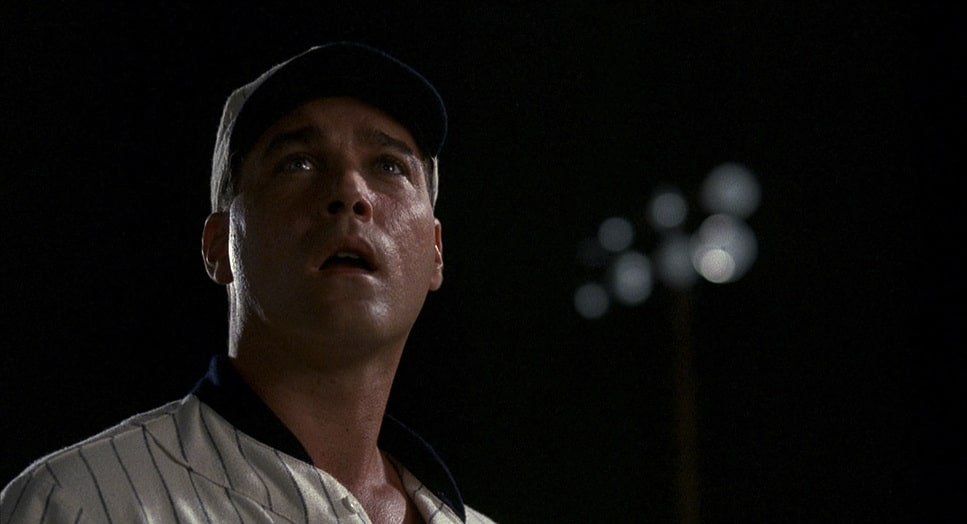

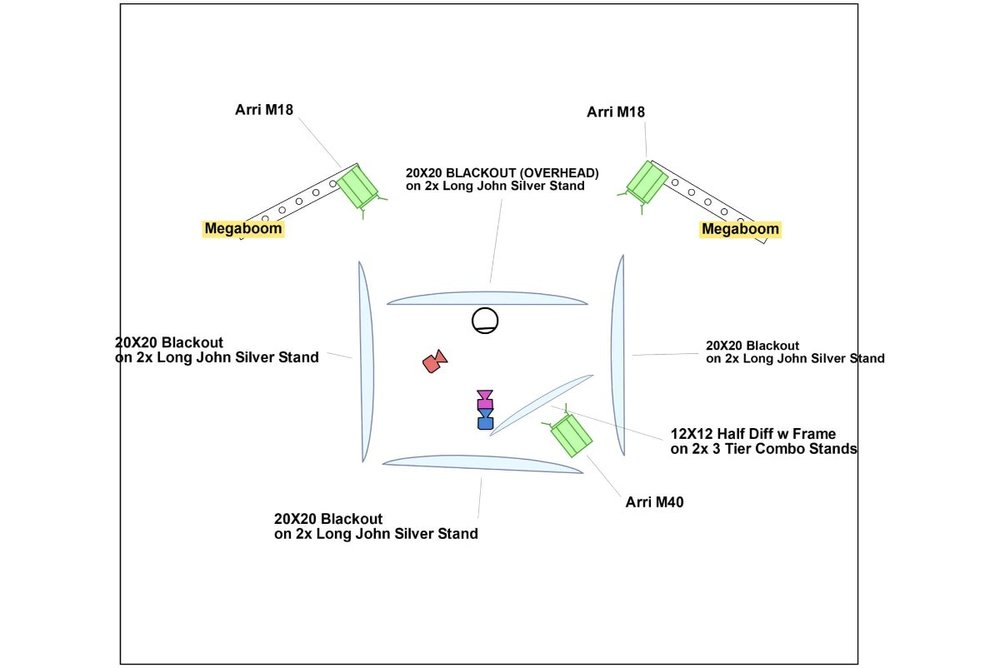
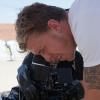
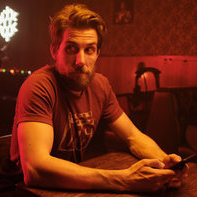
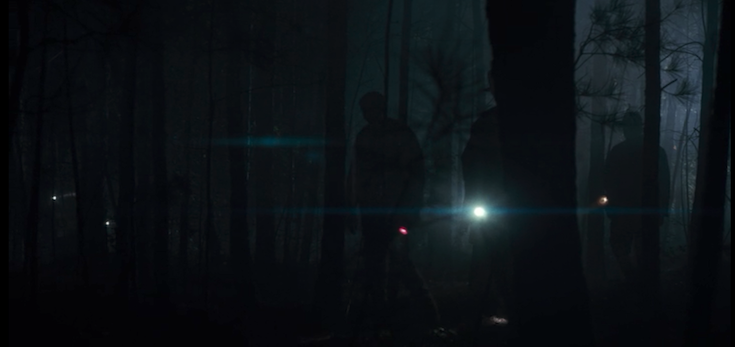
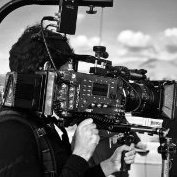

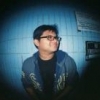
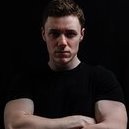
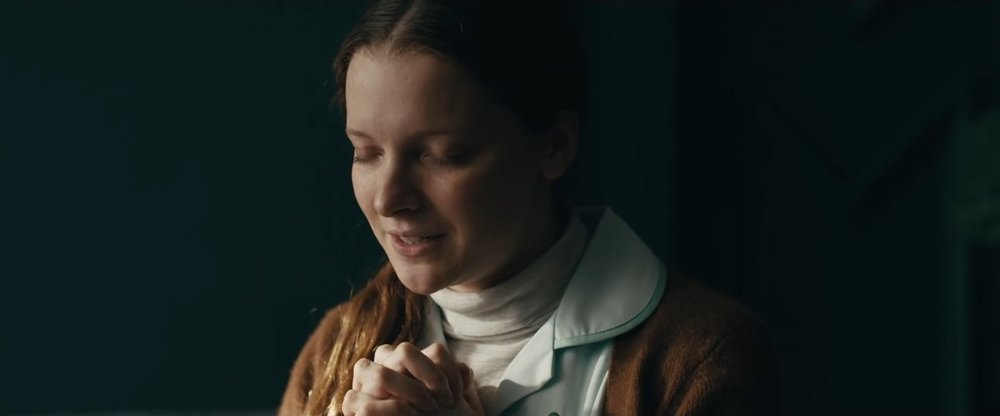
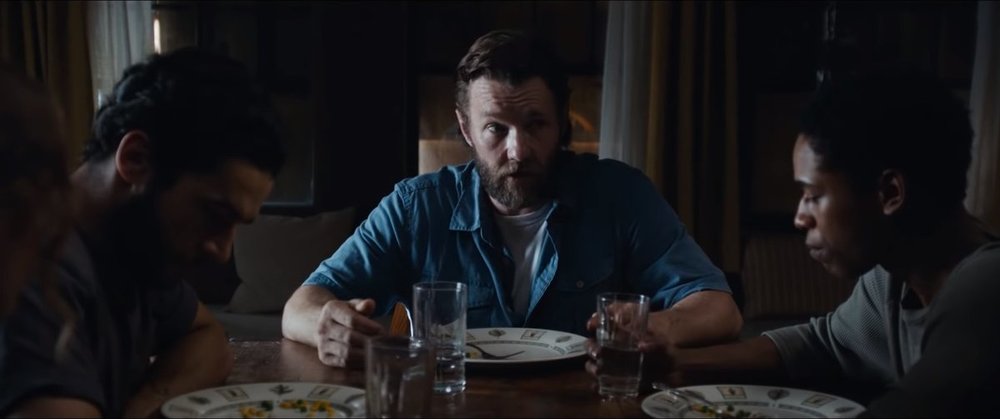
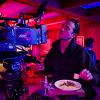

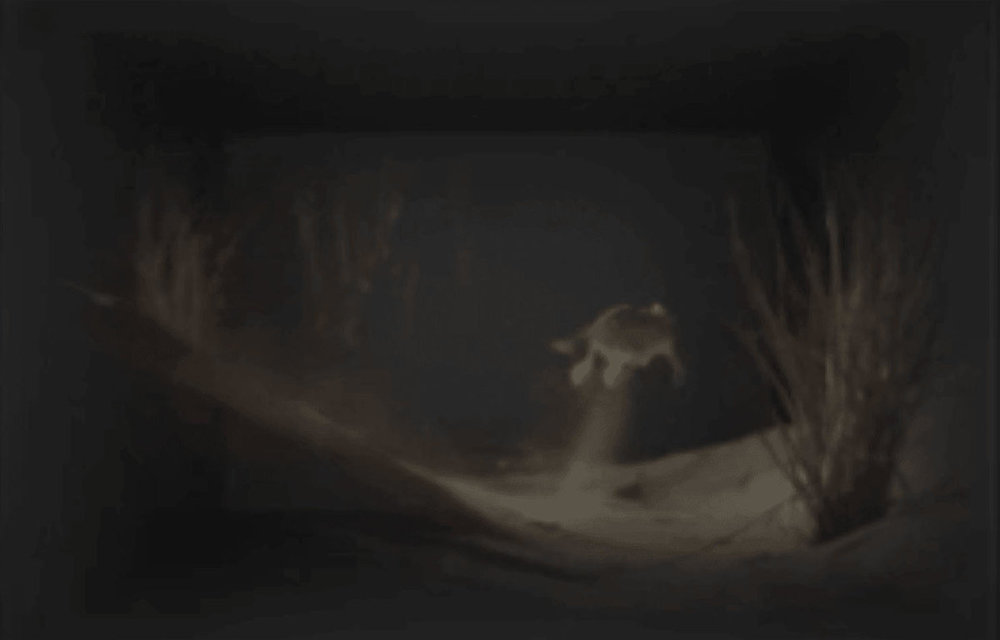



.thumb.jpg.79369da59c0c9d8dbabb45f178b6f21c.jpg)